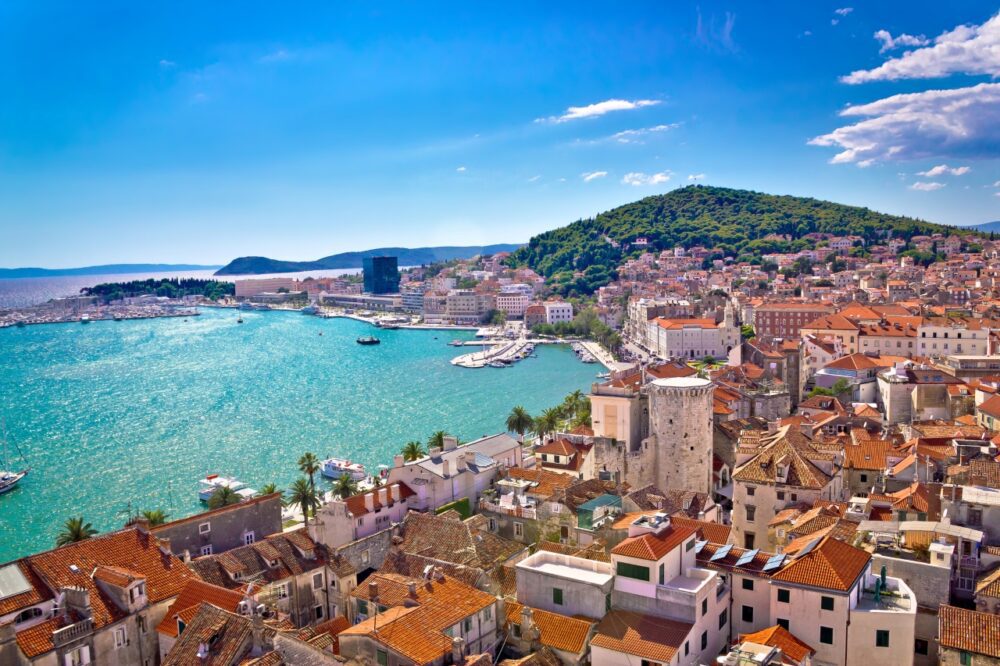
Is Split worth visiting? Without a doubt! When I first stepped into Split, I was blown away by the seamless blend of ancient history and laid-back Mediterranean vibes. Wandering through the maze-like streets of Diocletian’s Palace felt like stepping back in time, while the bustling Riva waterfront was perfect for soaking up the sun and people-watching.
Split, located on Croatia’s stunning Dalmatian Coast, is a city that offers something for everyone. From its rich Roman history to its crystal-clear beaches and lively nightlife, Split has a charm that’s hard to resist. It’s the perfect gateway to nearby islands like Hvar and Brač, but it’s also a destination worth exploring in its own right. Whether you’re dining on fresh seafood, hiking up Marjan Hill for panoramic views, or diving into the turquoise waters of the Adriatic, Split delivers unforgettable experiences. But is Split worth visiting for you?
In this blog post, we’ll uncover the top 10 reasons why Split should be on your travel list, along with insider tips to help you make the most of your trip. Keep reading to discover why Split might just become your favourite Croatian escape.
Table of Contents
Pros – Reasons You Should Visit Split
1. Stunning Coastal Scenery and Adriatic Views
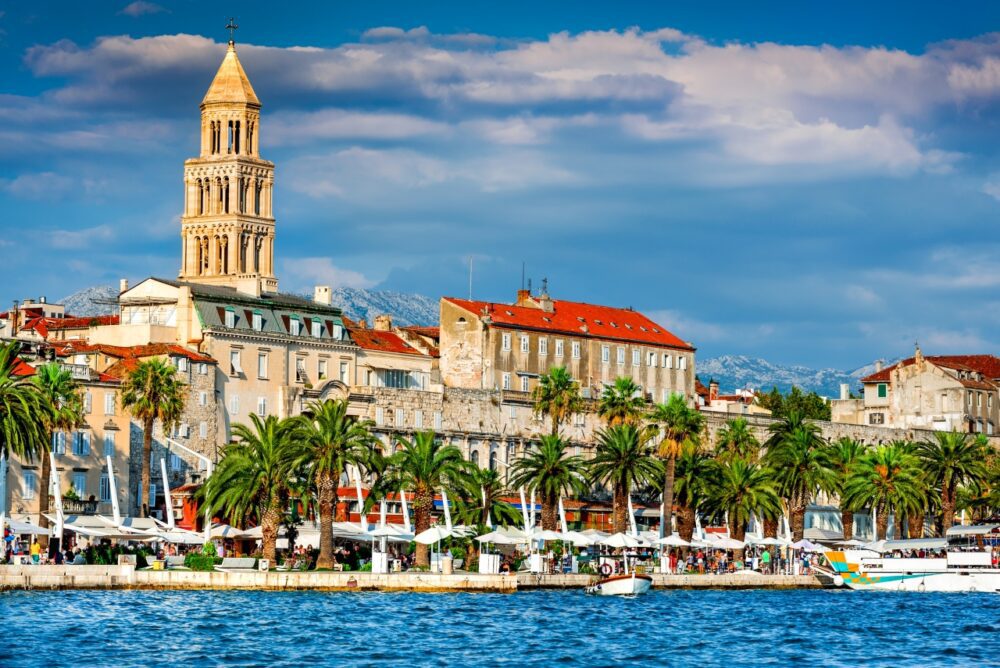
Split sits on the eastern shore of the Adriatic Sea, offering breathtaking coastal scenery, crystal-clear waters, and some of the most beautiful sunsets in Europe. The city’s waterfront promenade, known as the Riva, is the perfect place to take in the views while enjoying a coffee or a glass of local wine. With the sparkling sea on one side and palm-lined streets on the other, the setting is nothing short of spectacular.
One of the highlights of my visit was taking a boat tour around the nearby islands. The contrast between the deep blue of the Adriatic and the rugged Dalmatian coastline is absolutely mesmerizing. Whether you’re lounging by the sea, taking a ferry to nearby islands, or simply walking along the promenade, Split’s coastal beauty is one of its biggest draws.
2. The Incredible History of Diocletian’s Palace
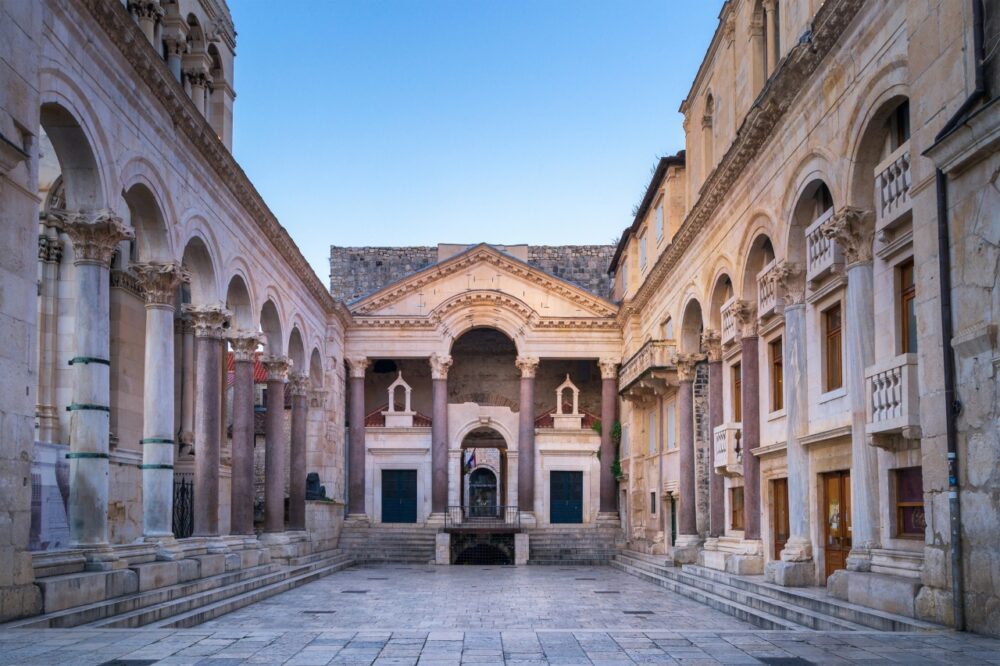
Split is built around the remains of Diocletian’s Palace, a massive Roman fortress that dates back to the 4th century. What makes it unique is that this isn’t just a historical site—it’s a living, breathing part of the city, with homes, restaurants, bars, and shops all nestled within the ancient stone walls. Walking through its narrow alleyways feels like stepping back in time, yet at the same time, it’s full of modern energy.
I was amazed at how well-preserved the palace remains are, especially the underground basements, which give a real sense of the scale of this ancient complex. You can also visit the Peristyle, the palace’s central courtyard, where you’ll often see street performers dressed as Roman soldiers. The mix of history and daily life in Diocletian’s Palace makes it one of the most fascinating places in Europe.
3. Easy Access to Stunning Dalmatian Islands
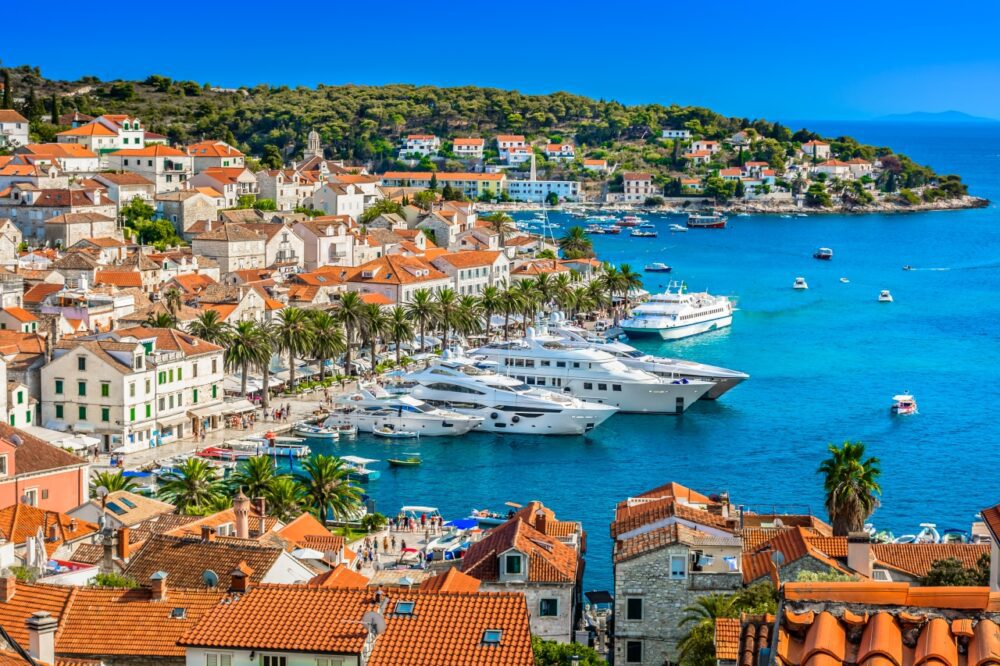
Split is the perfect base for exploring Croatia’s famous Dalmatian islands, which offer some of the most spectacular beaches, charming villages, and lively summer scenes in the Adriatic. From Split’s ferry terminal, you can easily take day trips to islands like Hvar, Brač, and Vis.
I took a ferry to Hvar, which is known for its beautiful harbor, lavender fields, and vibrant nightlife. Another must-visit is Brač, home to Zlatni Rat, one of the most famous beaches in Croatia. If you’re looking for something more peaceful, Vis offers a more secluded, untouched feel. Whether you’re after party scenes, hidden coves, or quiet fishing villages, Split provides easy access to them all.
4. The Perfect Blend of History and Modern Life
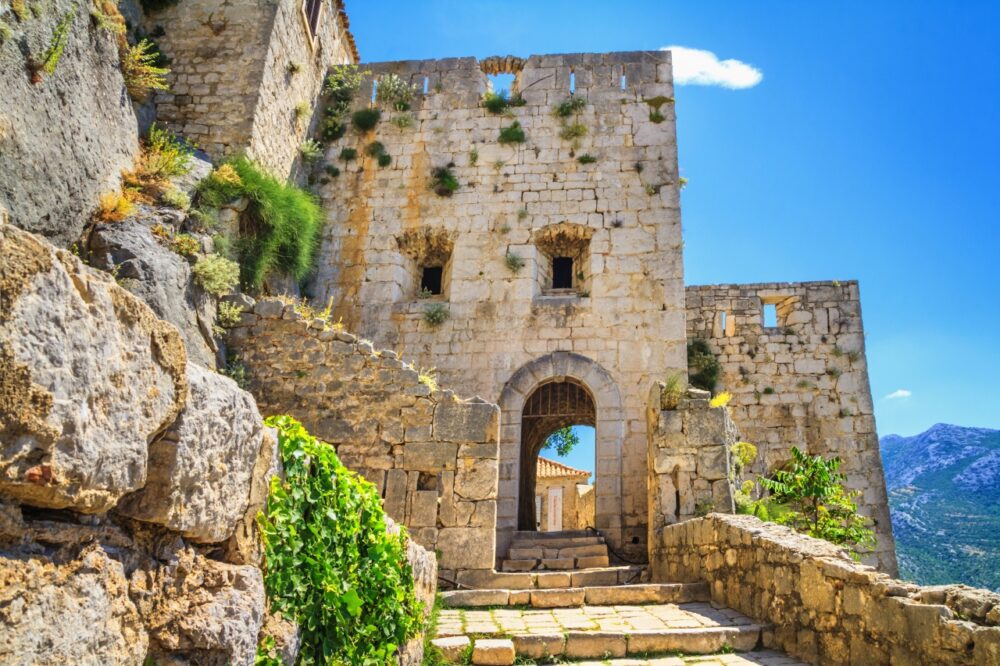
One of the best things about Split is how seamlessly it blends ancient history with modern life. The old town is filled with medieval streets, ancient ruins, and traditional stone buildings, but at the same time, it has a lively atmosphere with trendy bars, boutique shops, and waterfront cafés. You can walk past Roman columns one minute and then find yourself in a stylish wine bar the next.
I loved wandering through the maze-like streets of the old town, where I stumbled upon hidden courtyards, small art galleries, and charming cafés. The combination of historical depth and contemporary culture makes Split feel dynamic and exciting while still maintaining its deep connection to the past.
5. Beautiful Beaches Right in the City
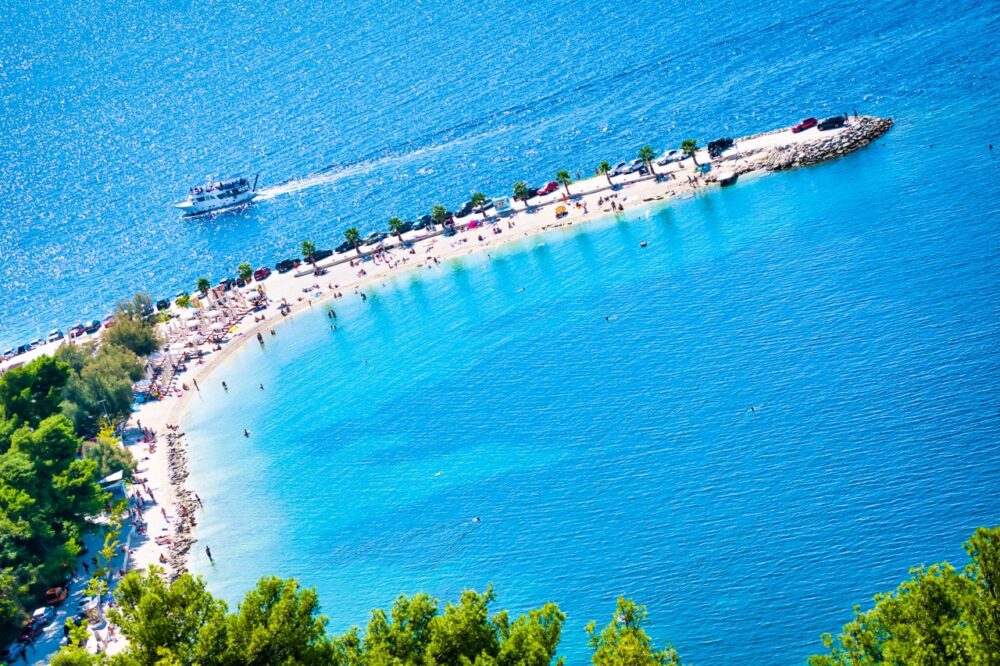
While Split is known for its history, it also has several beautiful beaches that are easily accessible from the city center. Unlike some coastal cities where you have to drive long distances to reach the best beaches, Split has several within walking distance or a short bus ride away.
One of my favorite spots was Bačvice Beach, which is known for its shallow, clear waters and lively atmosphere. It’s also famous for being the birthplace of picigin, a traditional Croatian beach game played in the shallows. If you prefer something quieter, Žnjan Beach offers a more relaxed vibe, while Kašjuni Beach, located at the foot of Marjan Hill, provides a stunning natural setting with crystal-clear water.
6. Fresh and Delicious Mediterranean Cuisine
Split’s location on the Adriatic means that seafood is a big part of the local cuisine, and you’ll find plenty of restaurants serving freshly caught fish, octopus, and mussels. The city’s food scene also embraces traditional Dalmatian flavors, with dishes like pašticada, a slow-cooked beef stew, and black risotto made with squid ink.
One of my best meals was at a small konoba (traditional tavern) in the old town, where I had grilled sea bass, drizzled with olive oil and paired with local white wine. The simplicity and freshness of the food make every meal in Split a delight. If you love Mediterranean flavors, this city is a paradise for food lovers.
7. Marjan Hill Offers Incredible Views and Nature
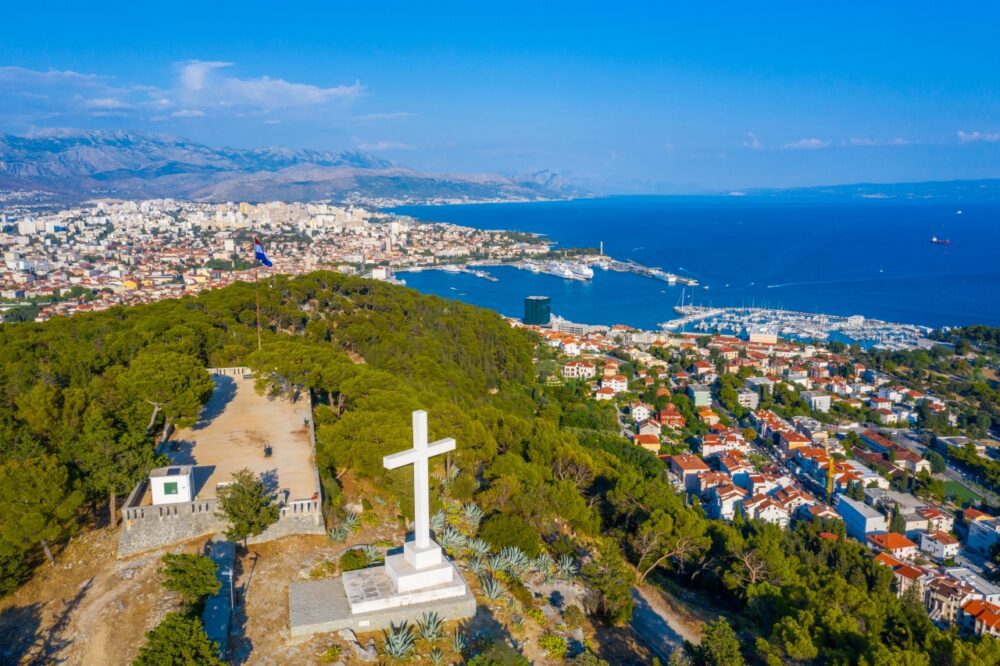
For those looking to escape the crowds and get a bit of exercise, Marjan Hill is a fantastic place to explore. Located just outside the old town, this lush, forested hill offers hiking trails, scenic viewpoints, and peaceful picnic spots. From the top, you get breathtaking panoramic views of Split, the Adriatic, and the surrounding islands.
I hiked up Marjan early in the morning, and it was one of the most rewarding experiences of my trip. The trails are well-marked, and along the way, you’ll pass historic churches, hidden stone staircases, and quiet spots perfect for relaxing. If you want to see a different side of Split, Marjan Hill is a must-visit.
8. A Lively Nightlife Scene
Split has a surprisingly vibrant nightlife scene, especially during the summer months when the city is buzzing with visitors. The Riva promenade comes alive at night, with bars and cafés filled with people enjoying drinks by the sea. The old town has a mix of trendy cocktail bars, underground clubs, and lively beach bars that stay open late.
One of the best nightlife spots I found was Academia Ghetto Club, a hidden gem with an artsy vibe and live music. If you’re looking for a more energetic scene, Bacvice Beach has clubs that keep the party going until sunrise. Whether you prefer a laid-back evening or a wild night out, Split offers a little of everything.
9. Affordable Compared to Other Mediterranean Destinations
Compared to places like Dubrovnik, Hvar, or other Mediterranean hotspots, Split is relatively affordable. You can find reasonably priced accommodations, great meals at local taverns for a fraction of the price you’d pay in other coastal cities, and plenty of free or low-cost attractions.
I was able to stay in a charming guesthouse in the old town without spending a fortune, and even the more upscale restaurants had menus that were much more budget-friendly than those in other European coastal cities. If you want to experience the beauty of the Adriatic without breaking the bank, Split is a fantastic option.
10. A Laid-Back Atmosphere with Friendly Locals

One of the things I loved most about Split was its relaxed, welcoming atmosphere. Despite being Croatia’s second-largest city, it still has a small-town feel where people take their time enjoying coffee, strolling the Riva, and soaking in the coastal lifestyle. The locals are friendly and happy to share recommendations, whether it’s for the best place to swim or where to find the best seafood.
I never felt rushed while exploring Split, and the slower pace of life made it easy to truly enjoy the city. Whether you’re wandering through Diocletian’s Palace, enjoying a long seaside lunch, or taking a sunset stroll along the Riva, Split’s charm lies in its ability to make you slow down and appreciate the moment.
Cons – Things to Consider When Visiting Split
1. Split Gets Extremely Crowded During Peak Tourist Season
Split has become one of the most popular destinations in Croatia, and during the summer months, particularly in July and August, the city can feel completely overrun with tourists. The narrow streets of the old town, especially within Diocletian’s Palace, become packed with people, making it difficult to move around freely or enjoy the historic atmosphere without bumping into large tour groups. The Riva promenade, normally a peaceful spot to relax by the sea, is often filled with visitors looking for a table at one of the waterfront cafés.
I visited Split in late July, and while the city was stunning, it was hard to fully appreciate its beauty with the sheer number of tourists everywhere. Trying to get a good photo inside the palace without dozens of people in the background was nearly impossible. If you want to enjoy Split without the overwhelming crowds, visiting in the shoulder seasons—May, June, September, or October—is a much better option. The weather is still warm, but the city feels far more relaxed and enjoyable.
2. Prices Have Increased Significantly in Recent Years
While Split is still more affordable than Dubrovnik, prices have risen dramatically in recent years due to the influx of tourism. Accommodation, restaurant meals, and even basic services have become noticeably more expensive, particularly in the peak summer months. Hotels and Airbnb prices skyrocket between June and August, and even casual meals at touristy restaurants along the Riva can be significantly more expensive than what you’d pay in less crowded Croatian cities.
I noticed that while you can still find affordable options, especially in local konobas (traditional taverns) away from the main tourist areas, prices for things like boat tours, cocktails, and taxis were much higher than expected. Even a simple coffee on the Riva cost nearly double what I had paid in Zagreb. If you’re traveling on a budget, it’s best to plan ahead by booking accommodation early and seeking out smaller, family-run restaurants rather than dining in the heavily touristic parts of the city.
3. Beaches in Split Are Not as Pristine as Those on the Islands
While Split has several beaches that are easy to reach from the city center, they are not as spectacular as the ones found on nearby islands like Brač, Hvar, or Vis. Many of the city’s beaches are either small, pebbly, or artificial, and they can get overcrowded, especially during the high season. Bačvice Beach, the most famous beach in Split, is known for its shallow waters and lively atmosphere, but it can feel overly crowded and noisy, with limited space to relax.
I went to Kašjuni Beach, which is one of the more scenic spots, but even there, finding a quiet place to swim was difficult because of the number of people. If you’re expecting the postcard-perfect beaches that Croatia is famous for, you’re better off taking a ferry to one of the nearby islands, where the water is clearer, the crowds are smaller, and the landscapes feel more untouched. Split’s beaches are fine for a quick dip, but they don’t compare to the island beaches just a short boat ride away.
4. Service in Restaurants and Cafés Can Be Slow
One thing that visitors to Split—and Croatia in general—quickly notice is that service in restaurants and cafés can be quite slow, especially compared to what travelers from North America or Northern Europe might be used to. The Mediterranean way of life is more relaxed, and this translates into a slower pace when dining out. Servers often take their time bringing menus, taking orders, and delivering the bill, which can be frustrating if you’re in a hurry.
I had dinner at a restaurant in the old town where it took nearly 40 minutes just to get a drink, despite the place not being particularly busy. It wasn’t that the staff was unfriendly, but there was a definite lack of urgency. While this relaxed approach is part of the culture and can be enjoyable if you’re not in a rush, it’s something to keep in mind, especially if you’re on a tight schedule. The best approach is to embrace the slow pace and use the extra time to soak in the surroundings rather than expecting quick service.
5. It Can Be Noisy, Especially at Night
Split has a vibrant nightlife scene, and while that’s a major draw for many visitors, it can also be a downside if you’re looking for a quiet and restful stay. The old town, with its historic stone streets and lively bars, comes alive at night, and the noise from late-night revelers often echoes through the narrow alleyways. If you’re staying in a centrally located hotel or Airbnb, especially within Diocletian’s Palace or along the Riva, expect to hear music, loud conversations, and the occasional shouting well into the early hours of the morning.
I stayed in an apartment near the Peristyle, and while the location was incredible, I was kept awake by street musicians, bar crowds, and people chatting outside well past midnight. If you’re a light sleeper, it’s worth looking for accommodation outside the old town, such as in the quieter neighbourhoods of Meje or Firule. Alternatively, bringing earplugs can make a huge difference if you want to get a good night’s sleep after a long day of sightseeing.
When to Visit Split
The best times to visit Split are late spring (May to early June) and early autumn (September to October). During these shoulder seasons, you’ll find warm weather perfect for beach days, fewer crowds, and the city’s lively atmosphere still buzzing. Summer (July and August) is peak season, and while the city comes alive with tourists and events like the Split Summer Festival, it can get hot and crowded, with prices to match. In winter, Split is quiet and mild, offering a peaceful pace and an ideal time to explore Diocletian’s Palace and the local culture without the crowds, though swimming might be too chilly for most.
How to Get to Split
Split Airport (SPU), located about 24 kilometres from the city centre, is the main gateway to Split. It’s well-served by airlines like Croatia Airlines, easyJet, and Lufthansa, with seasonal flights connecting Split to most major European cities. From the airport, you can take the Croatia Airlines shuttle bus or a local bus to the main bus station, which is conveniently located near the Old Town. Taxis and ride-hailing services are also available, though pricier. If you’re arriving from other cities in Croatia, the train or bus network offers direct connections, while ferries connect Split to several Adriatic islands and coastal cities like Dubrovnik and Hvar.
Where to Stay in Split
Split offers a range of accommodation options across different neighbourhoods, each with its own appeal:
- Luxury: Old Town / Diocletian’s Palace – Stay in the heart of Split’s historic centre, surrounded by ancient walls and cobbled streets. Hotel Vestibul Palace and Heritage Hotel Antique both offer luxurious stays steeped in history.
- Mid-range: Bacvice – Known for its sandy beach and relaxed atmosphere, Bacvice is a short walk from the centre and offers easy access to swimming spots and beachside cafes. Try Hotel Luxe or Hotel Park for comfortable stays close to the beach.
- Budget: Veli Varoš – A charming neighbourhood filled with traditional stone houses and just a few minutes from the Old Town, Veli Varoš has affordable options like Hostel Split and Guest House Maris that offer both character and convenience.
Getting Around Split
Split is a very walkable city, especially within the Old Town and along the Riva promenade, where most attractions are within easy reach. For longer trips, Promet Split buses connect the main areas, including Bacvice, Marjan Hill, and the port, with affordable tickets that can be bought on board. While Split doesn’t yet have an official bike-sharing scheme, plenty of rental shops around the Old Town and the waterfront offer bikes for the day, a great option if you want to explore Marjan Hill. The Split Ferry Port also makes island-hopping easy, with regular ferries to nearby islands like Brač, Hvar, and Vis.
How Long to Spend in Split
Three days is ideal to experience Split’s main highlights, from wandering Diocletian’s Palace and enjoying the Riva promenade to relaxing on Bacvice Beach and sampling local seafood. With an extra day, consider a boat trip to nearby islands like Brač or Hvar for a taste of island life. If you have more time, take a day trip to Klis Fortress or the Cetina River for canyoning and outdoor adventure. Split also makes a great base for exploring the Dalmatian Coast, so consider adding a few more days if you’re keen to experience the region’s diverse landscapes and cultural sites.
Conclusion
So, is Split worth visiting? Absolutely! With its ancient landmarks, beautiful beaches, and vibrant atmosphere, Split offers the perfect mix of culture and relaxation. It’s an ideal destination for history buffs, island hoppers, and anyone looking to enjoy Croatia’s laid-back coastal lifestyle. While the city can get crowded during peak summer months, its charm and stunning scenery more than make up for it. If you’re ready to experience the best of Croatia’s Dalmatian Coast, start planning your trip to Split today—you won’t regret it!
